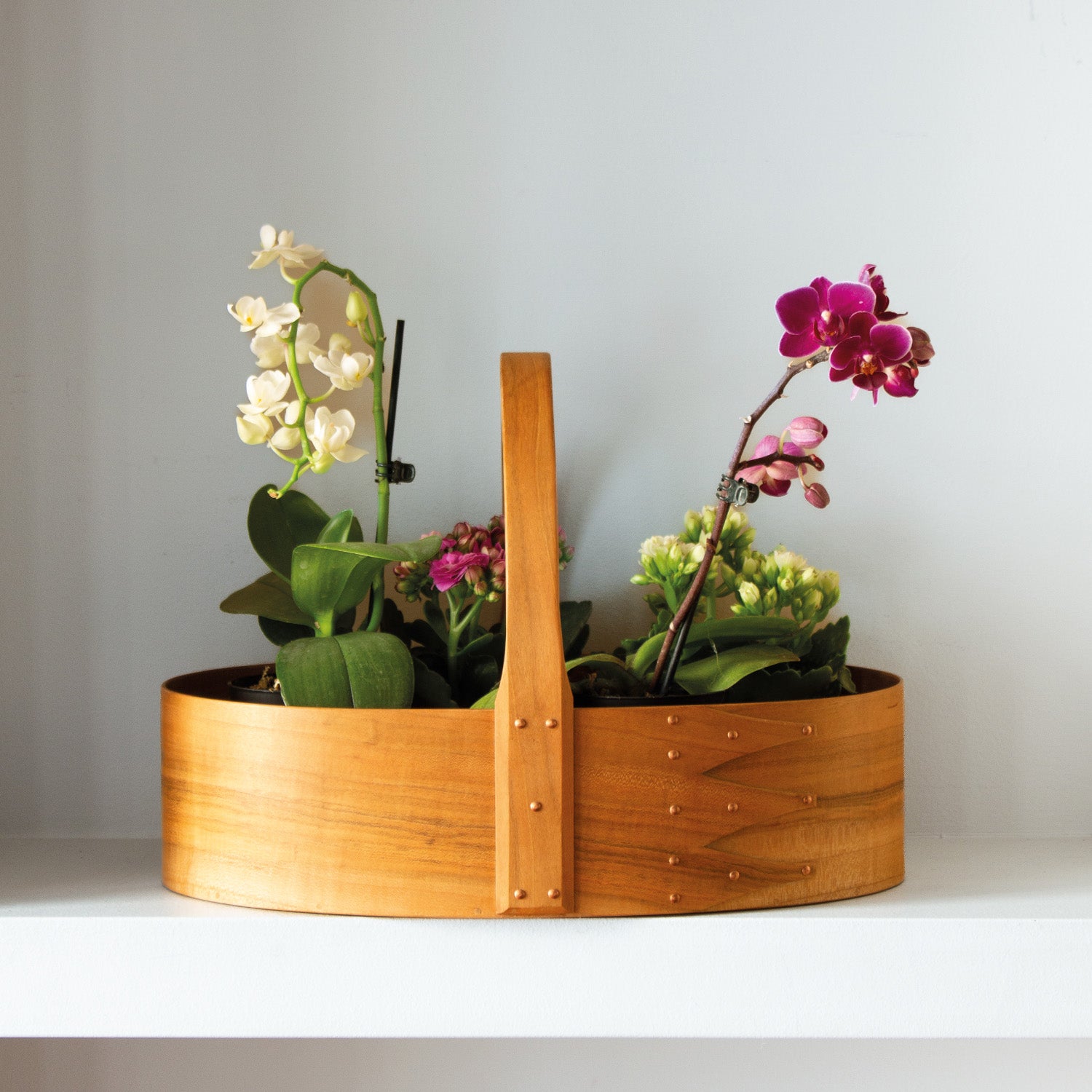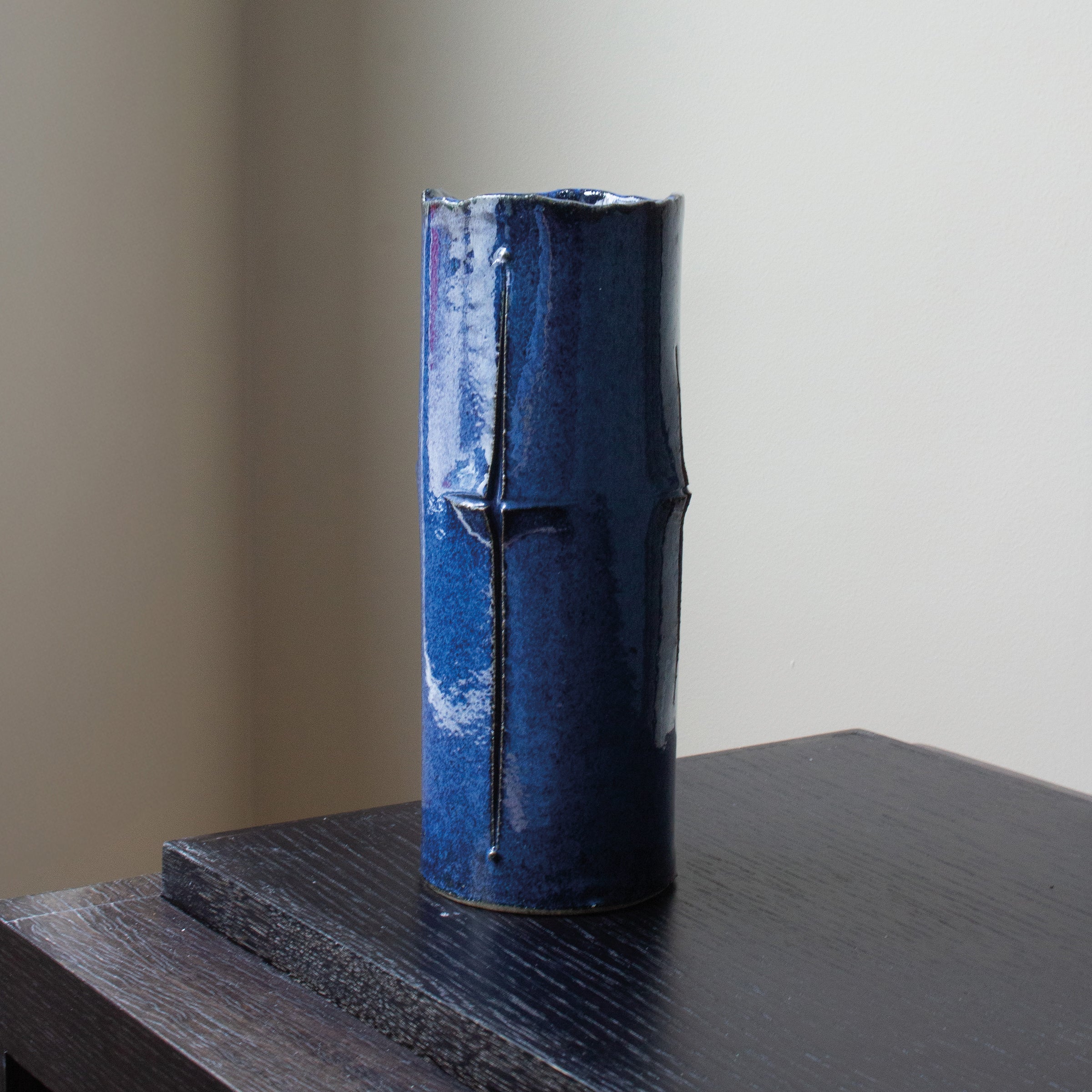
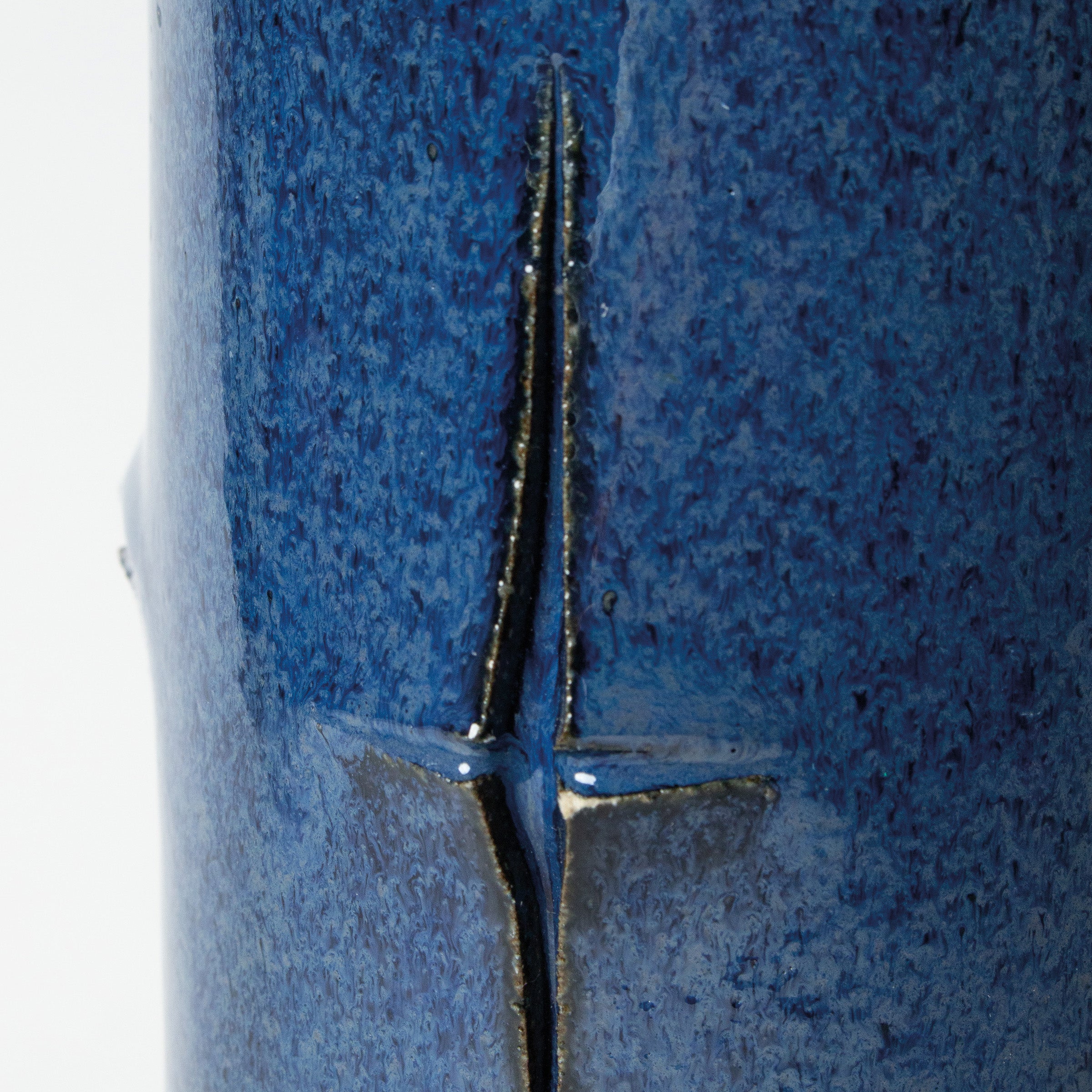
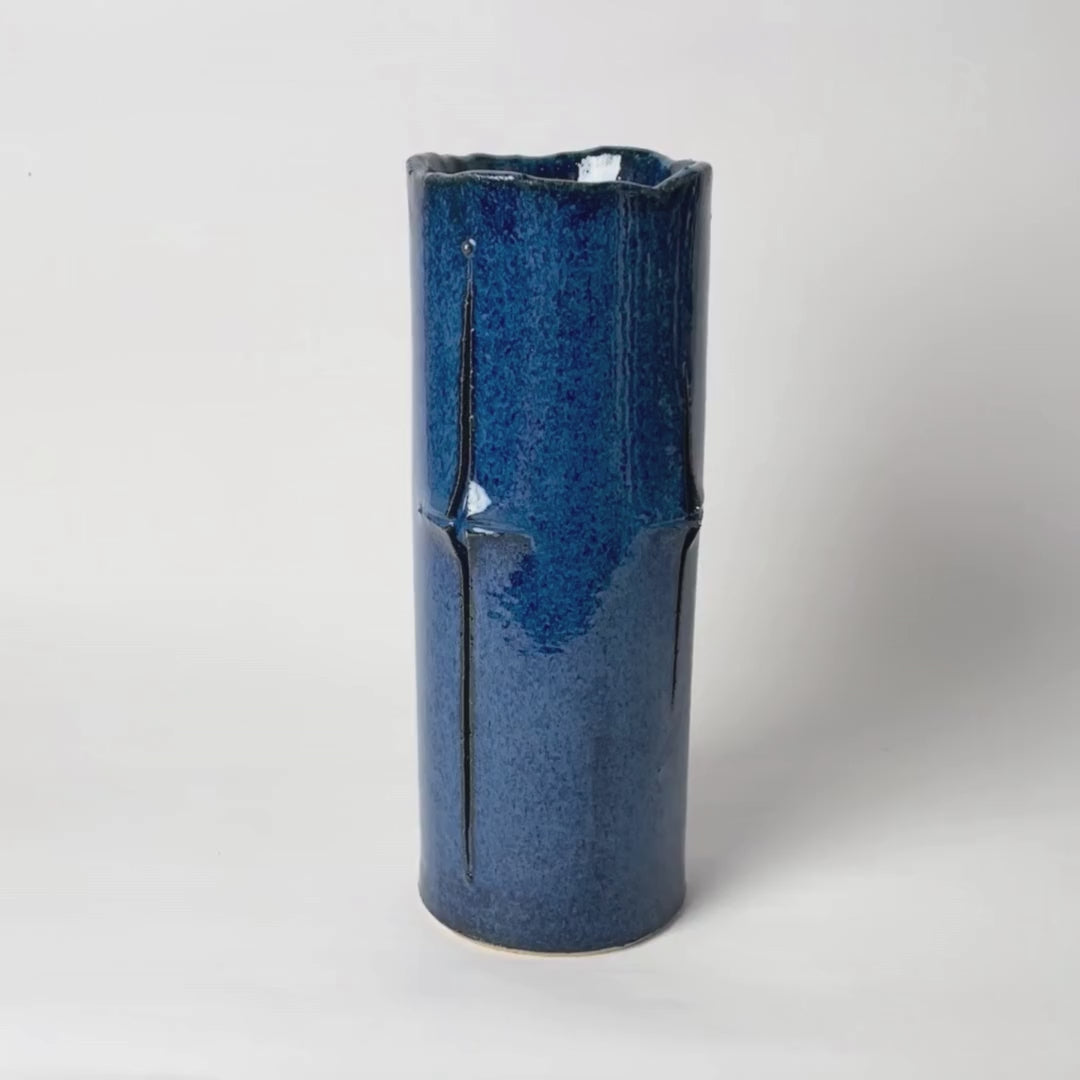
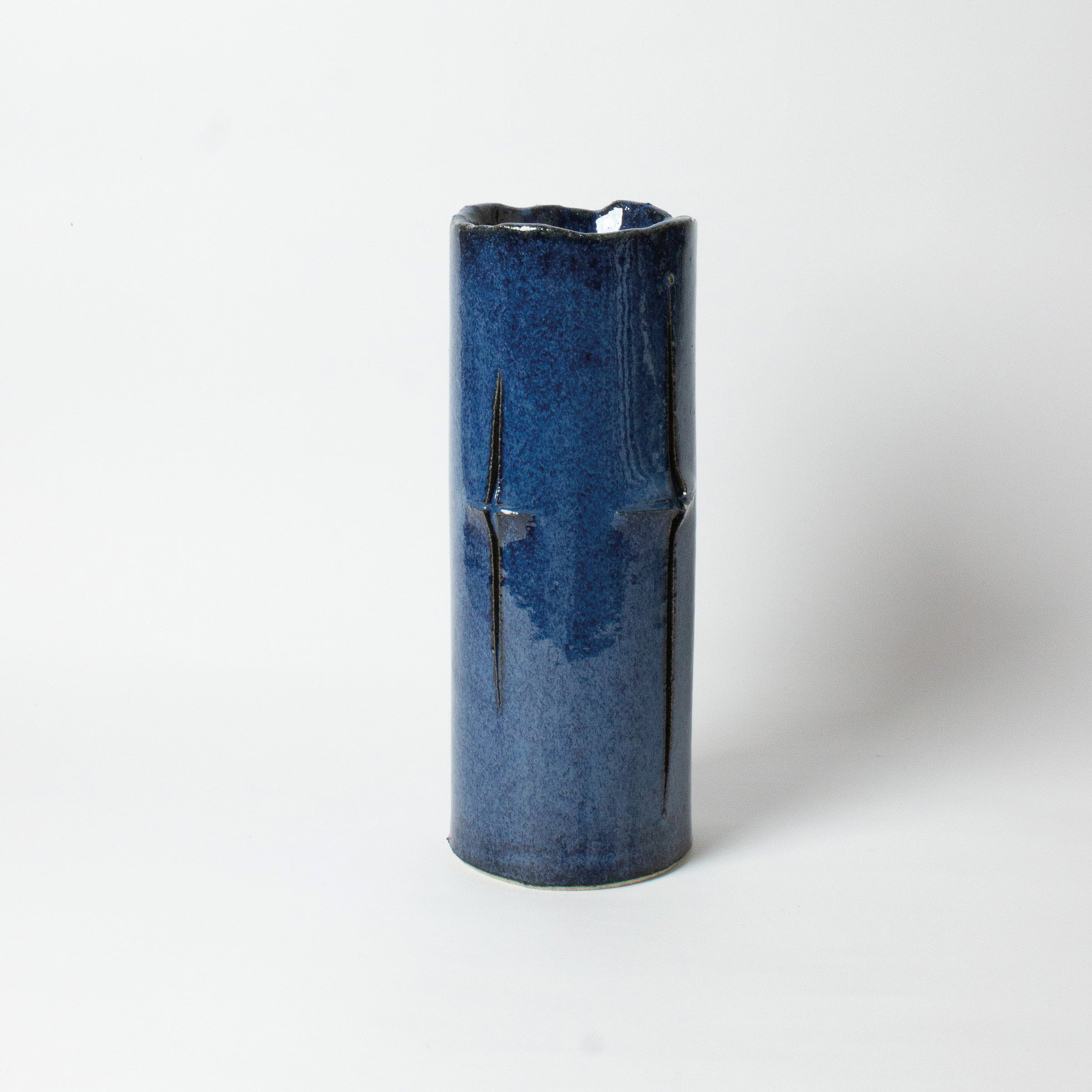


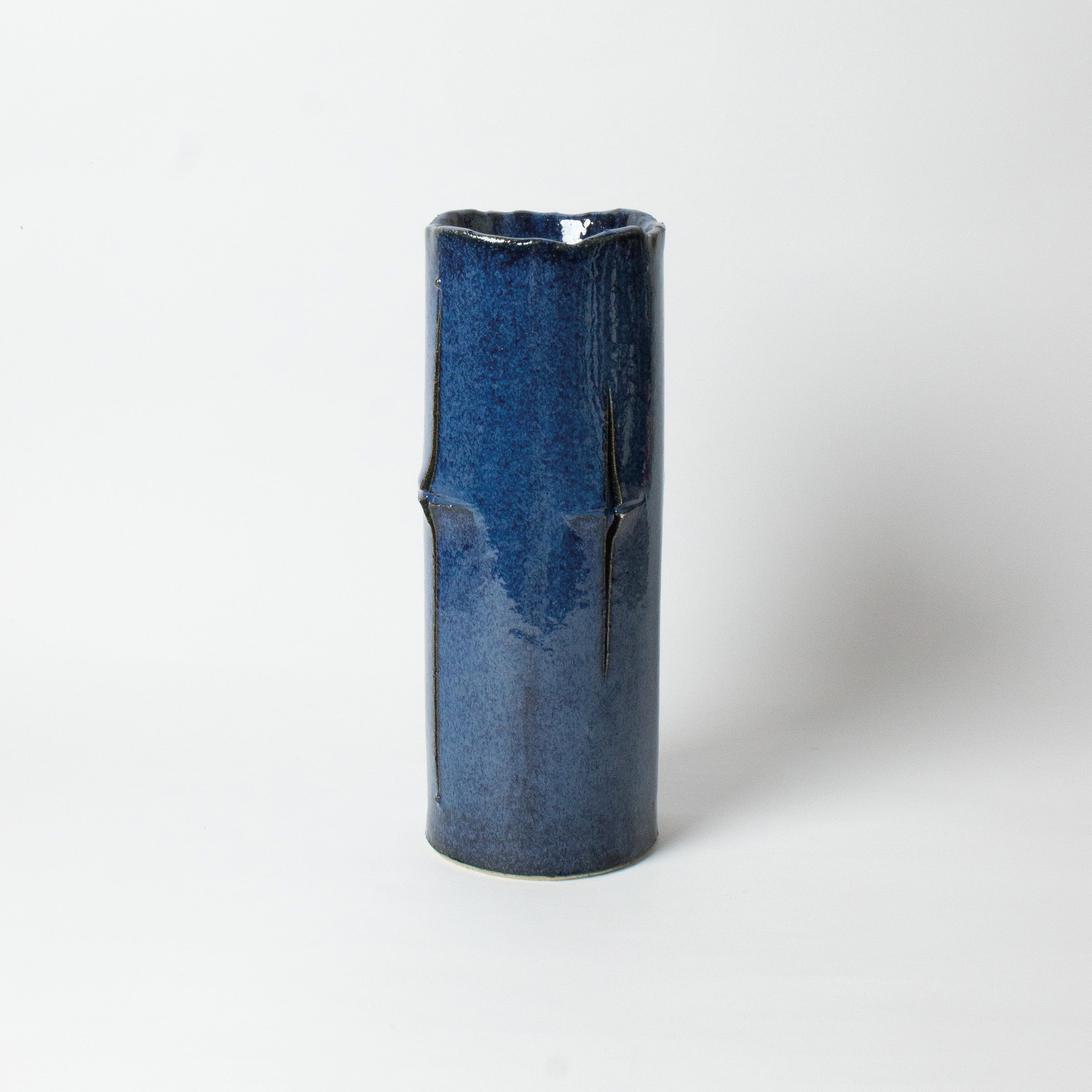

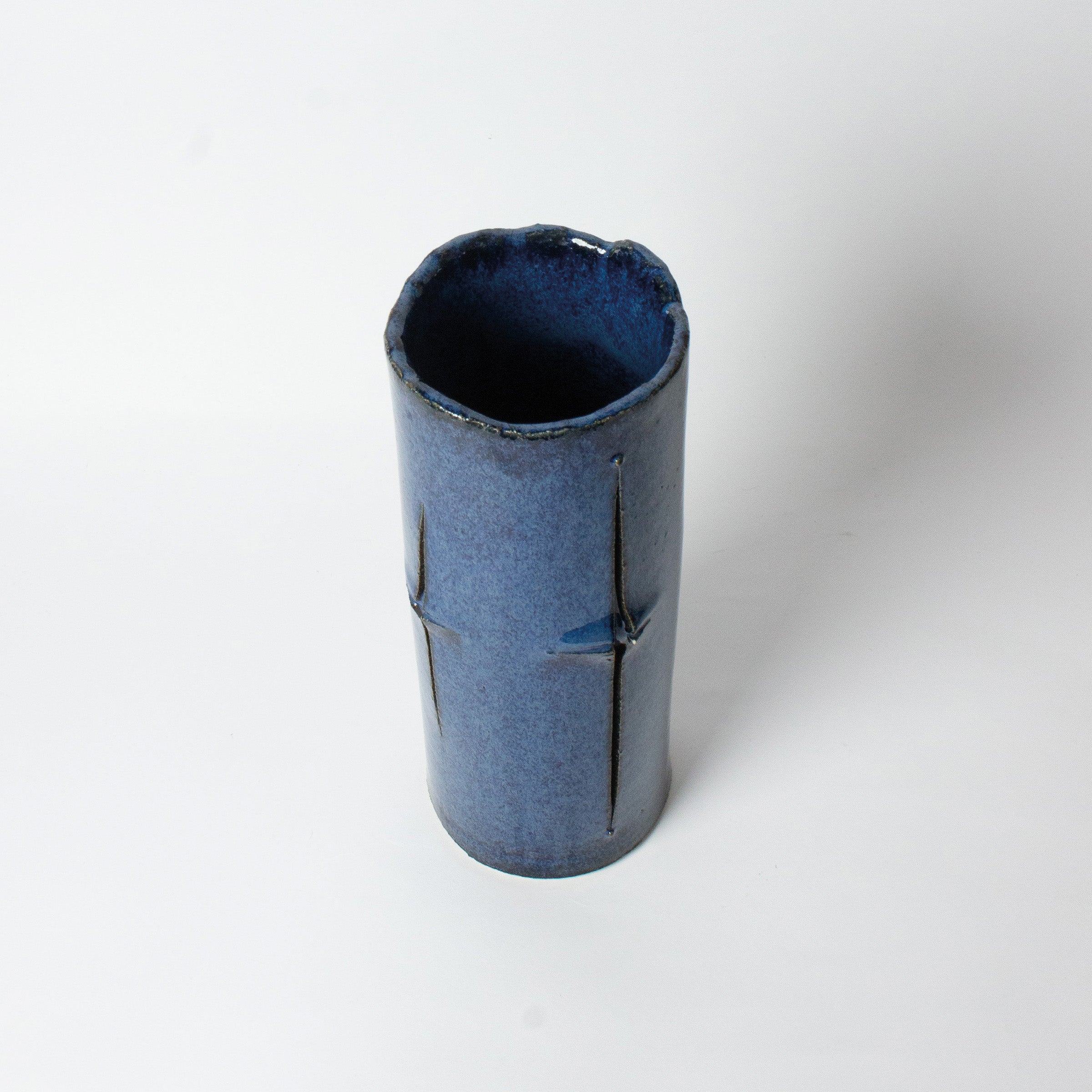
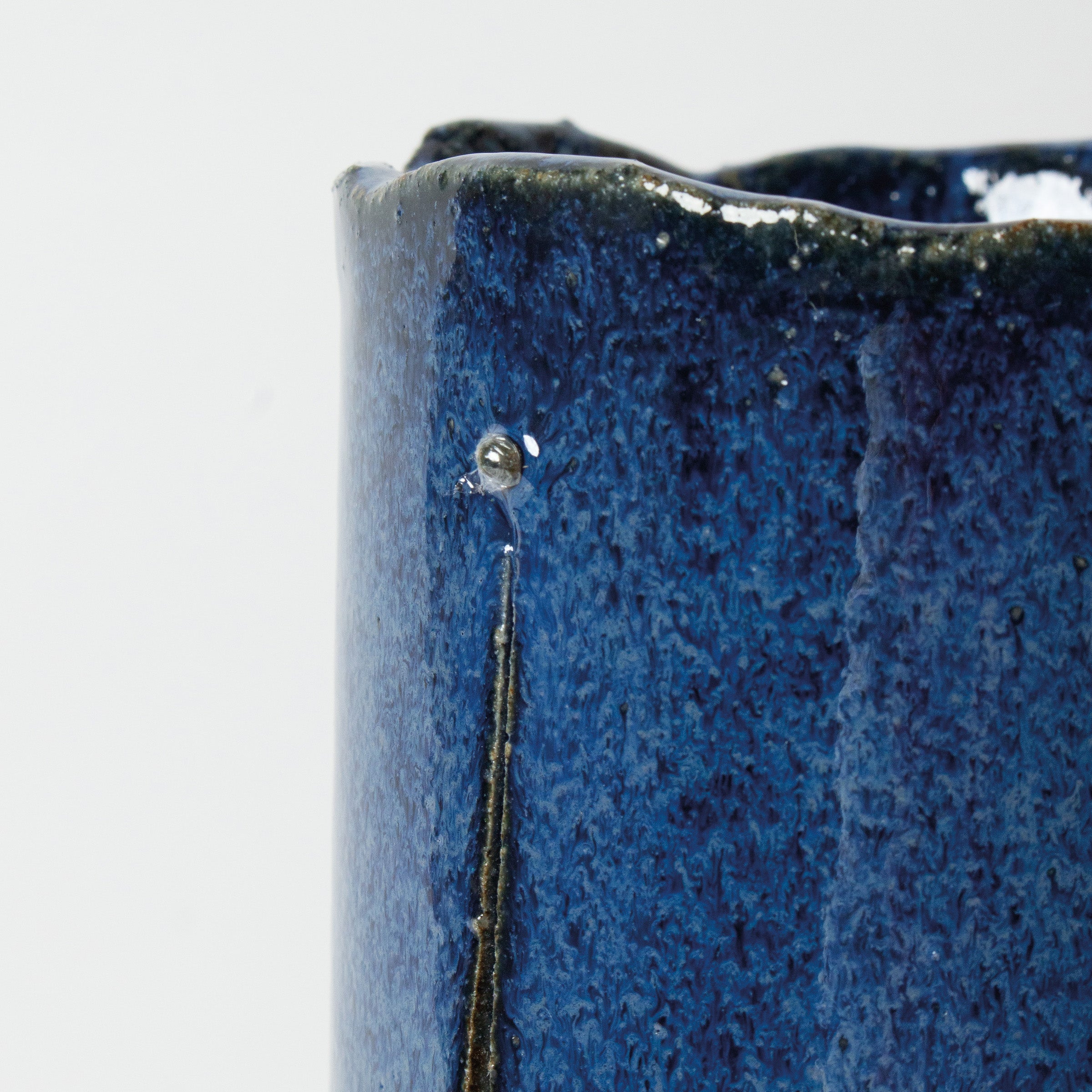


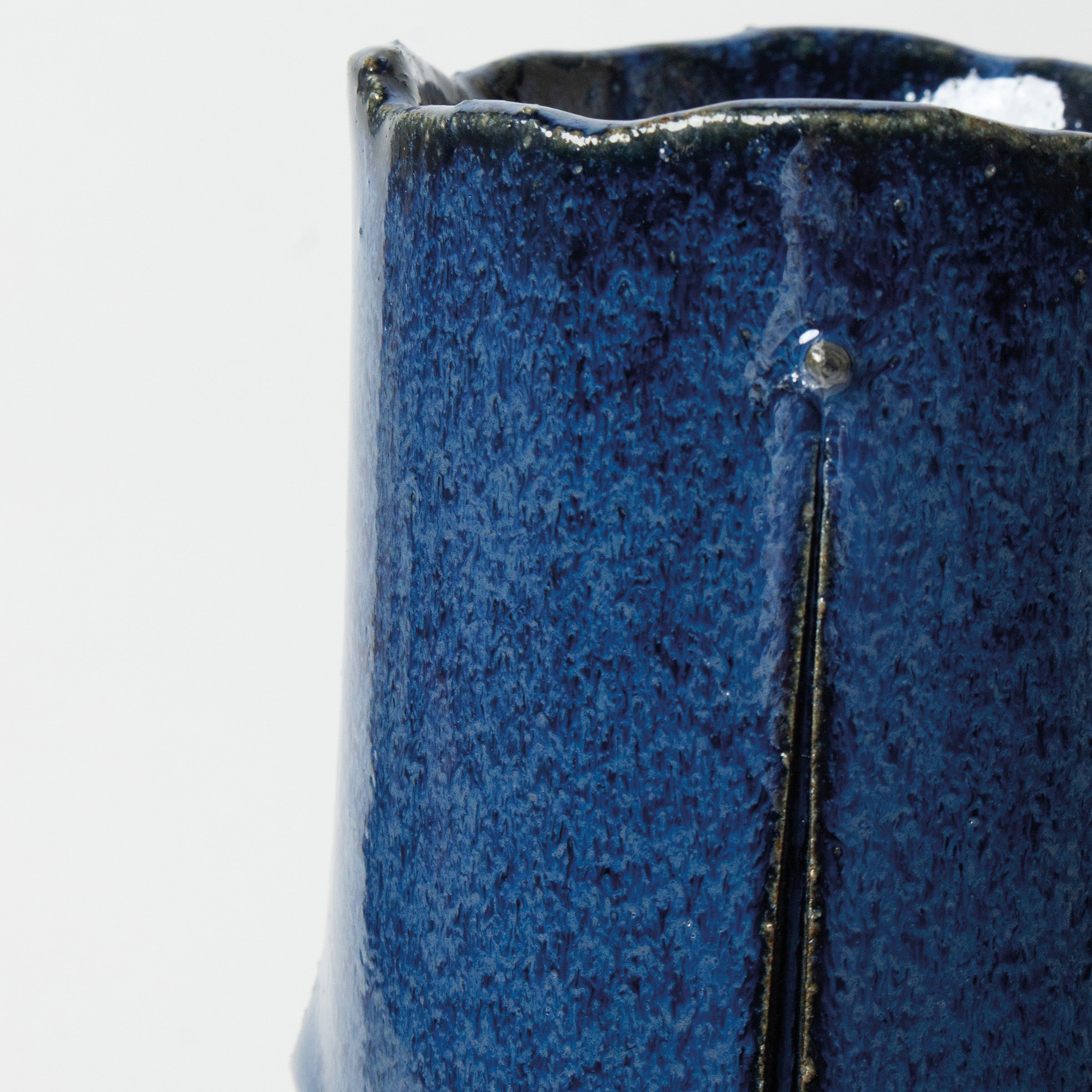
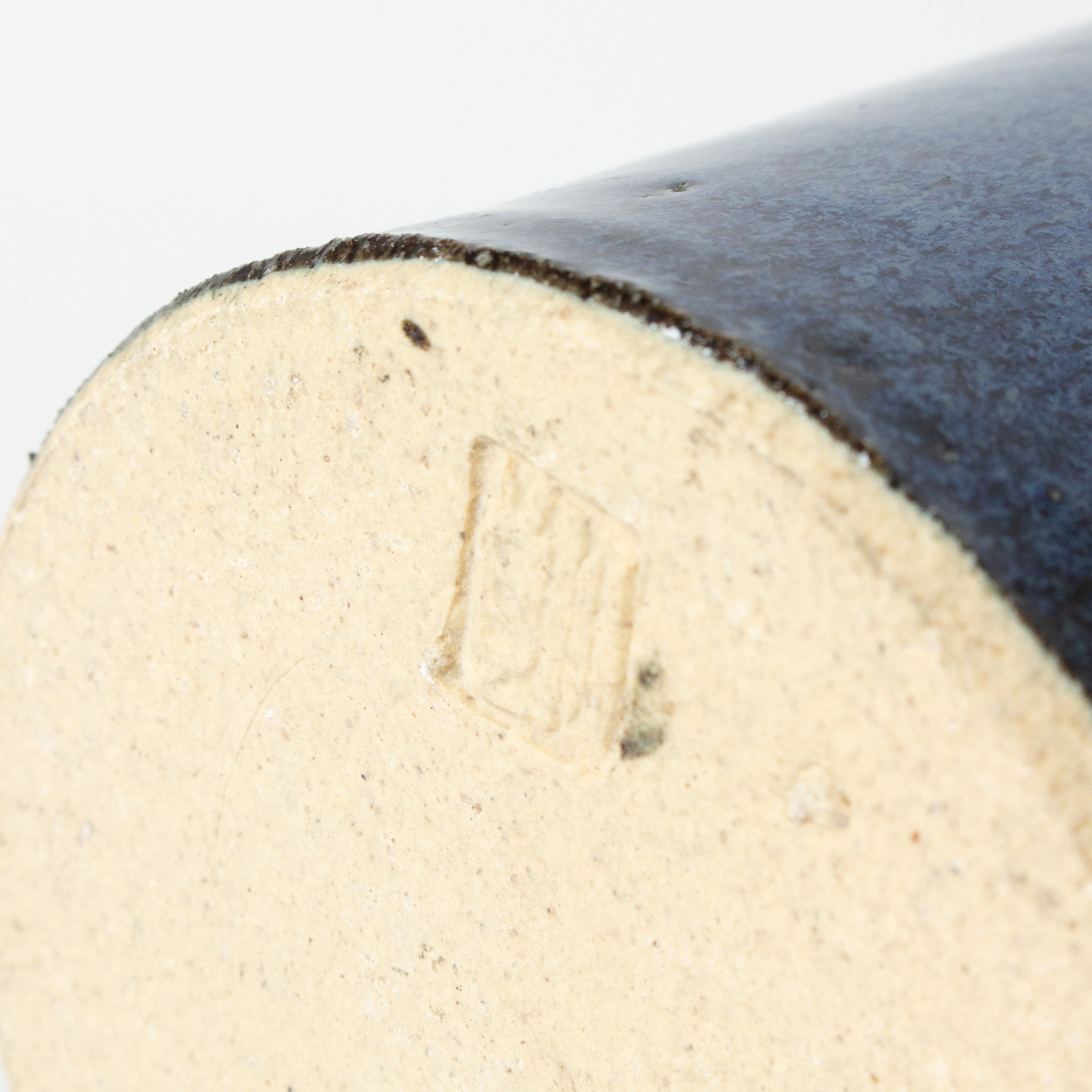
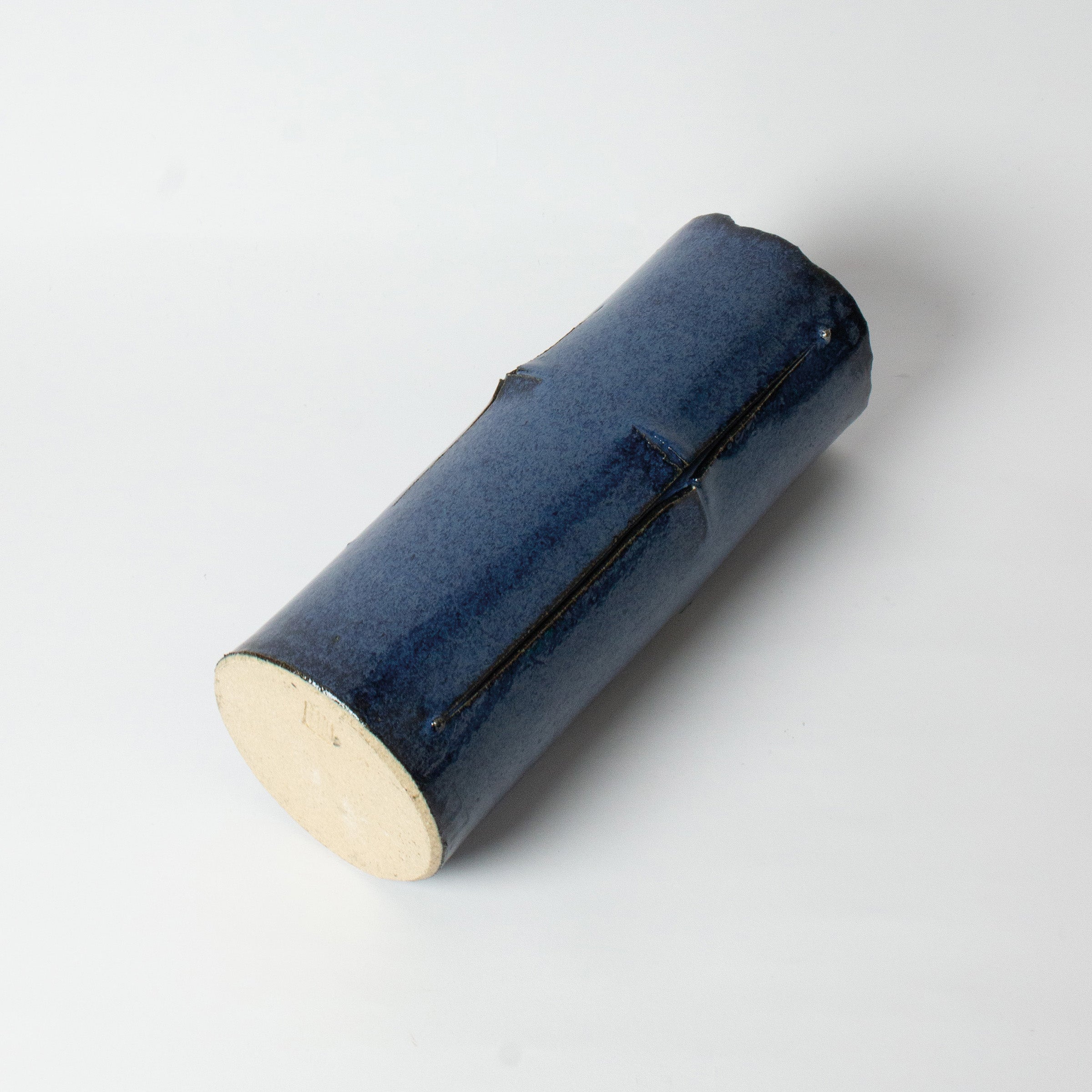
Namako-yū enamel ceramic vase by Junkichi Kumakura
This sculptural vase, created by Japanese ceramicist Junkichi Kumakura, is distinguished by its slender silhouette reminiscent of a stylized bamboo stalk. Its resolutely contemporary presence, both refined and abstract, reflects the influence of sculptural research conducted by ceramicists of the Sōdeisha movement. The deep blue glaze, typical of namako-yū ware, covers the entire surface, creating variations in intensity and shifting reflections, oscillating between midnight blue and saturated indigo. The pronounced edges and irregular rim lend the piece a unique presence.
Namako-yū glaze, literally "sea cucumber glaze," owes its name to the smooth, glossy, and slightly speckled appearance of its surface, reminiscent of the skin of this marine animal. This glaze, rooted in an ancient tradition, has been revisited by contemporary ceramicists for its dynamic visual effects and its ability to intensely reveal volume. In this vase, it accentuates the formal tensions of the stylized bamboo while enhancing the depth of the incised lines.
Junkichi Kumakura (1920–1985), an emblematic figure of the Sōdeisha movement, profoundly influenced contemporary Japanese ceramics through his commitment to an expression freed from function. A co-founder of the collective in 1948 alongside Yagi Kazuo and Yamada Hikaru, he championed from the outset a sculptural ceramics that transcended both function and formal tradition. From the 1950s onward, his work focused on architectural forms, often inspired by the plant or mineral worlds, which he interpreted through glazes of powerful tones. Recognized both in Japan and internationally, he exhibited in major institutions, including the National Museum of Modern Art in Kyoto and the Japan Society in New York. The approach of the Sōdeisha movement, still radical today, continues to influence contemporary ceramicists and contributed to redefining the boundaries between art and craft in postwar Japan. A detailed article on our website explores the history and aesthetics of this fundamental movement, which can be found via this link .
The vase is signed (in relief) under its base. It is presented in its signed wooden box (tomobako), calligraphed with the title of the work and the name of the artist, accompanied by its red seal. An information document (shiori) detailing the ceramist's profile completes the package.
| PLACE OF MANUFACTURE | JAPAN |
| DIMENSIONS | Height 24.5 cm - Diameter 9.5 cm |
|
WEIGHT |
1.8kg (vase + box) |
| MATERIALS | Ceramic |
KNOW-HOW
Japanese ceramics, born more than 10,000 years ago, are a dialogue between earth and fire, a quest for harmony through imperfection.
With a wide variety of high-quality raw materials, such as rich clays and natural glazes, each region has developed its own techniques, reflecting the identity of its terroir.
Hand-crafted, these vases, made using the most precious Japanese ceramic techniques, bear the imprint of a master craftsman who is the heir to a thousand-year-old tradition. This living art embodies the essence of Japan, where history and nature unite in beauty.
Although deeply rooted in tradition, these exceptional Japanese ceramic vases, signed by very big names, have a resolutely contemporary spirit while preserving their authenticity, incredibly decorative and wonderfully timeless sculptural pieces.
DELIVERY
Delivery
Free delivery in mainland France for purchases over €200. Orders are generally dispatched within 2 working days, except in special cases, as indicated in the banner at the top of the website.
Precious items are wrapped in beautiful fabric, beautifully knotted according to the precious Korean art of pojagi. Some exceptions apply, especially if the items are large. Learn more >
Detailed delivery information is available via this link >
Your invoice will be sent by email
Payment methods
By card (Stripe operator): Visa, MasterCard, Discover, American Express.
Secure card payment with 3D Secure.
By PayPal, Apple Pay, Google Pay and Shop Pay
Returns and exchanges
14 days to change your mind.
CARE INSTRUCTIONS
Handle with care. Rub gently with a soft cloth. Do not place near a heat source.
Choose options















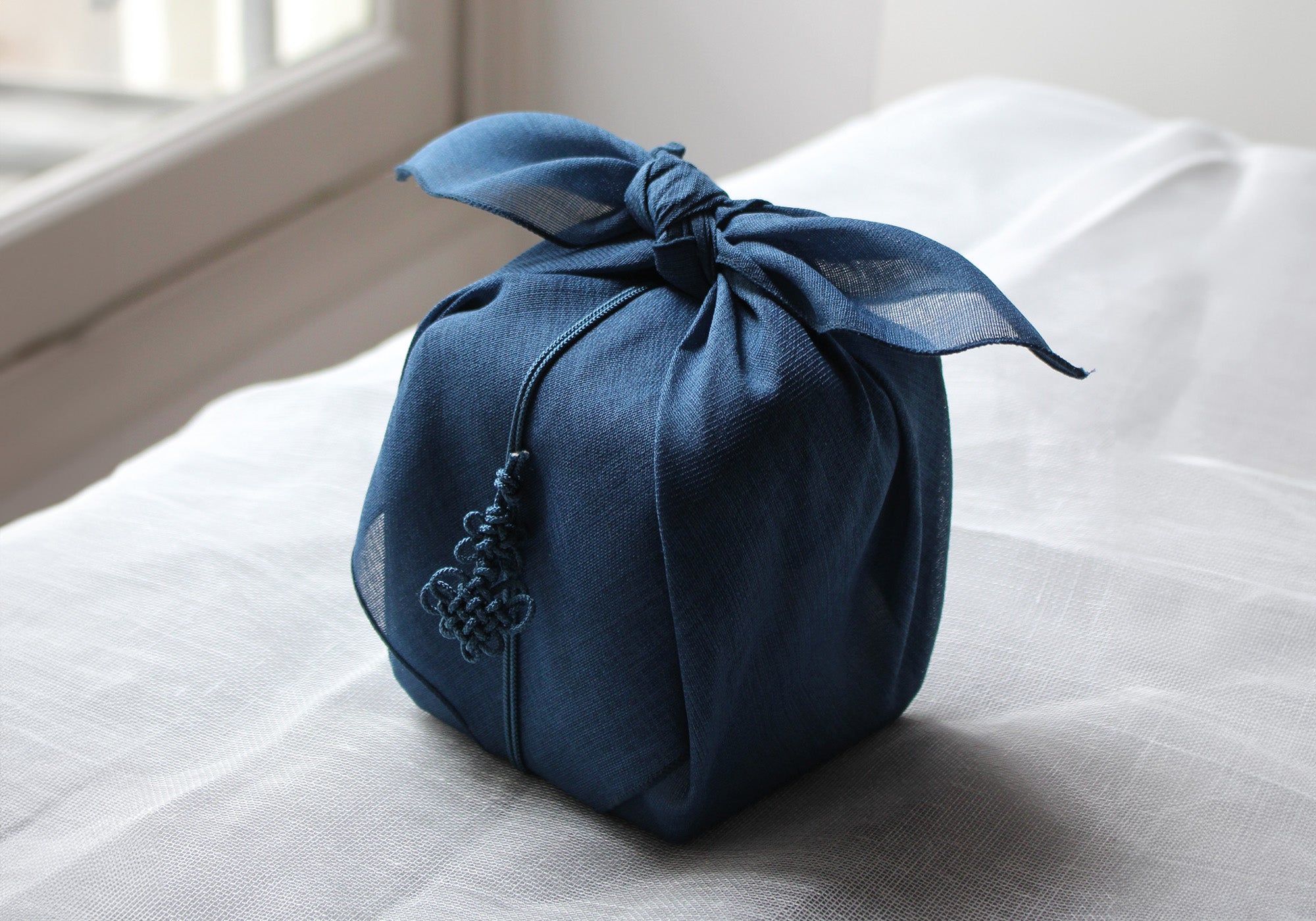
The art of wrapping
The exceptional items are wrapped in a beautiful fabric beautifully knotted using the little-known art of Korean pojagi and decorated with a delightful maedup (Korean ornamental knot). Details and conditions >





